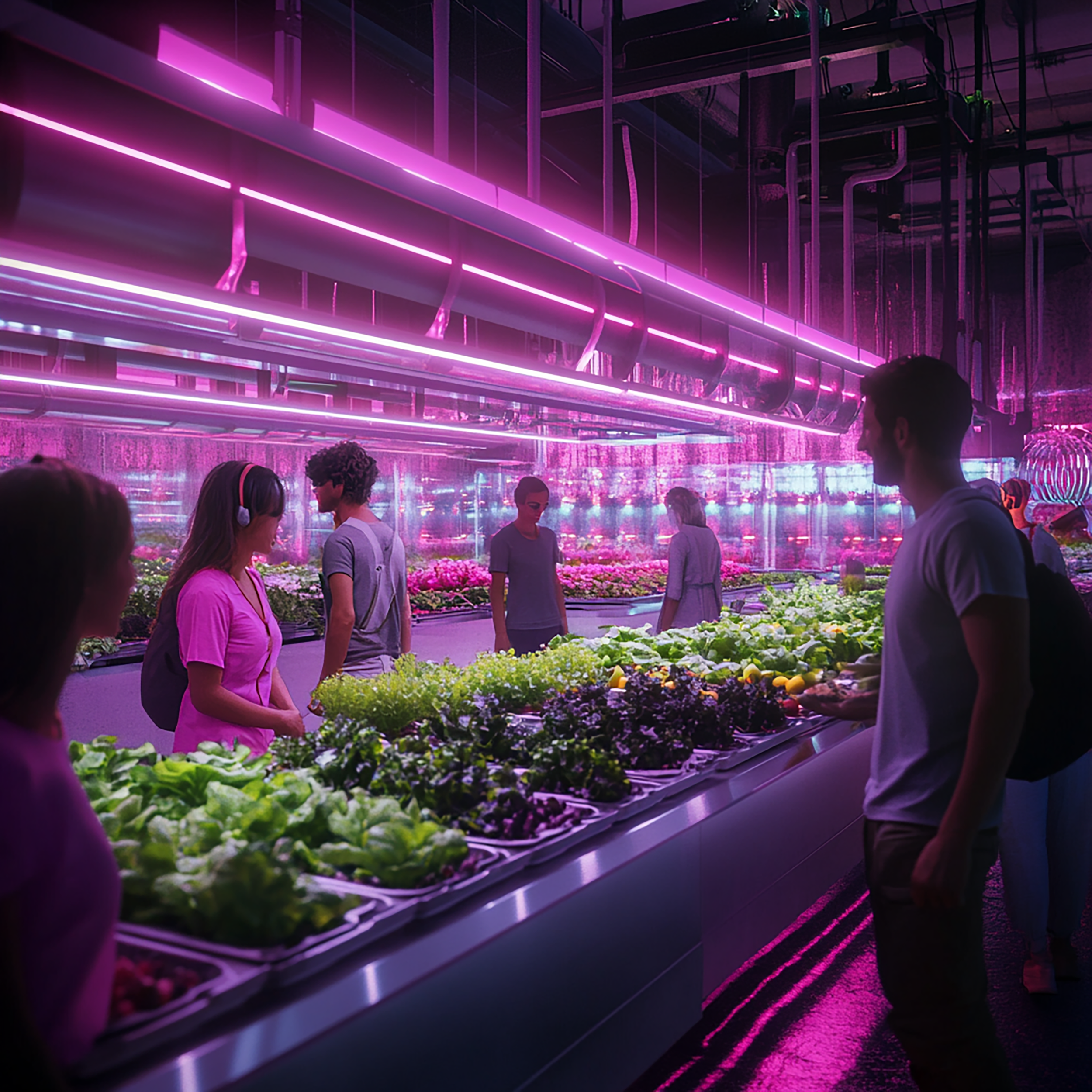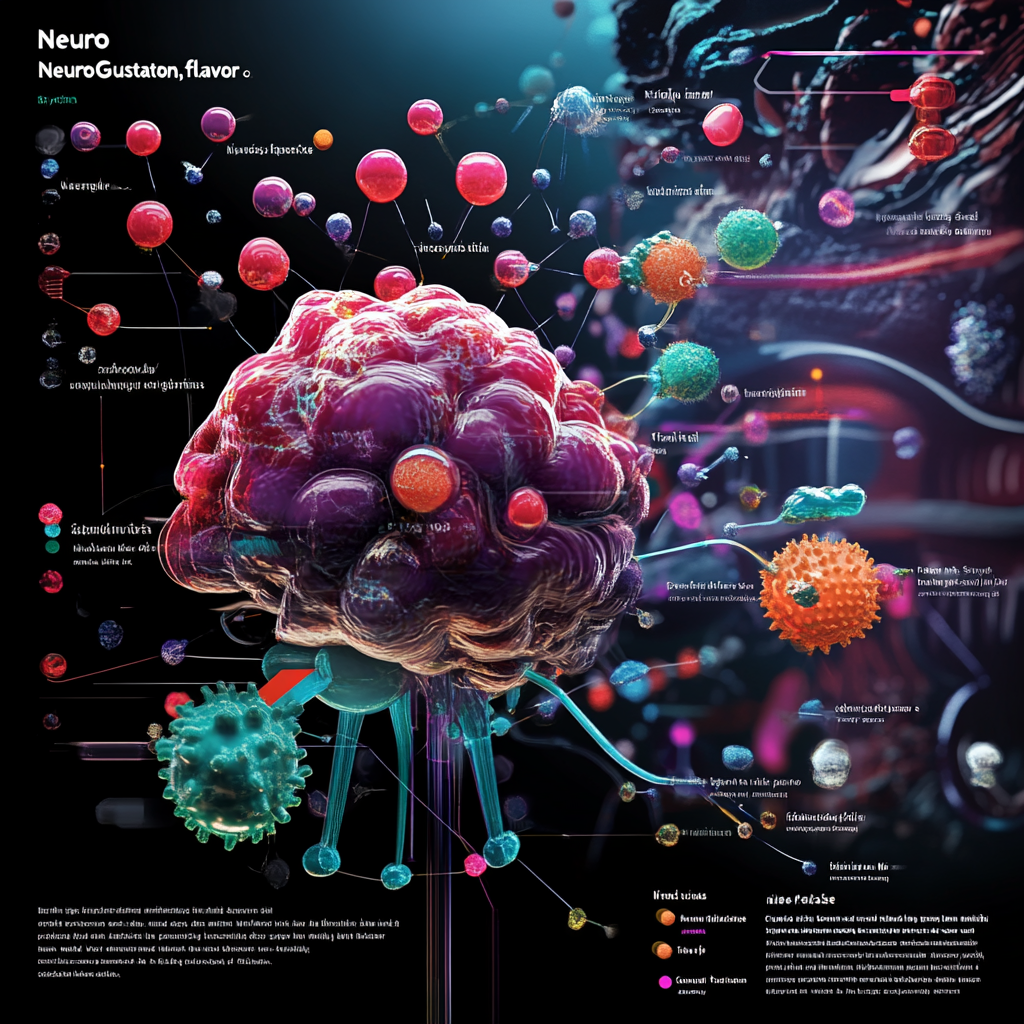
2028: The Year of Polarization
Biohacking extends human lifespan and athletic performance, neurotechnology breakthroughs accelerate, even in Alzheimer’s, human genetic selections become mainstream

The year begins with a bombshell: a comprehensive 5-year analysis of 100 prominent biohackers reveals that their biological age and aging speed have been reversed in all cases, thanks to their diverse interventions. This landmark study, published in Nature, provides the first large-scale validation of biohacking techniques, silencing many skeptics and galvanizing supporters. The study's lead author, Dr. Elena Zhao, becomes an overnight sensation, appearing on talk shows and podcasts to explain the implications of the research. Her talk, "Hacking the Code of Life," garners over 300 million views in its first week. The biohacking community celebrates this validation, with online forums and social media platforms buzzing with discussions about the most effective interventions highlighted in the study.
However, this triumph is met with an unexpected backlash. Biohacking becomes a heated political issue in the United States, reminiscent of the debates surrounding reproductive rights. Conservative Christian groups argue that reversing aging is "against God's will," sparking nationwide protests and counter-protests. Televangelist Dr. Robert Jeffress declares biohacking "a modern-day Tower of Babel," while progressive religious leaders like Rev. William Barber II argue for its potential to alleviate suffering and extend human potential.
Despite the controversy, the momentum of the biohacking movement doesn't slow. The FDA, confronted with data showing that 5% of the US population engages in biohacker tourism abroad, is compelled to act. In a surprising move, they introduce new legislation granting broader autonomy to patients in making health decisions. This shift represents a significant victory for biohackers and sets the stage for more rapid adoption of cutting-edge health interventions within the US.
Dr. Scott Gottlieb, former FDA commissioner, praises the move as "a necessary adaptation to 21st-century medical realities," while critics warn of potential safety risks. The new legislation creates a framework for "experimental therapies" that allows individuals to access treatments that have passed basic safety trials but have not yet completed the full FDA approval process, provided they sign informed consent waivers. While many more treatments are encompassed in this legislation, higher intervention biohacking is more possible outside the US.
The American Medical Association recognizes "Longevity Medicine" as a certified specialty. With a relatively short 3-year residency, favorable working hours comparable to dermatology, and the highest earning potential among medical specialties, it quickly becomes the top choice for the brightest medical students. This influx of talent into the field accelerates research and clinical applications of longevity interventions.
The impact of widespread biohacking adoption continues to reshape public health metrics. The percentage of obese people in the US drops from 31% to 25%, pushing the average life expectancy to 82 years. This dramatic improvement in population health, however, presents unexpected challenges for the insurance industry. Health insurance companies see a 5% decrease in market capitalization due to the increased lifespan of their customers. The loss is partially mitigated by the fact that these interventions are also increasing healthspan, reducing overall healthcare costs. HealthAll and BioSure are still poised for customer capture and have some of the biggest venture rounds in history.

The world of professional sports undergoes a revolution as major leagues, following basketball's lead, allow players to wear cutting-edge neuromodulation devices during competition. Using neuromodulation devices in sports results in a 50% decrease in unforced errors and a 30% increase in average scores. The heightened level of play draws more fans to stadiums and boosts viewership, ushering in a new golden age of athletic performance. The NFL's decision to allow quarterback Tom Brady, now 51 years old, to continue playing while using approved biohacking interventions becomes a cultural touchstone. Brady's continued excellence on the field, coupled with his openness about his biohacking regimen, inspires millions of fans to explore similar interventions.
In the business world, Hudson Health, a pioneering concierge health company that has rapidly expanded across the country, makes headlines with its $3 billion market cap IPO. Trading at 10 times revenue and boasting positive cash flow, Hudson Health becomes the poster child for the commercial viability of personalized, high-tech healthcare services. The success of Hudson Health triggers a wave of investment in similar companies. Venture capital firms once again create dedicated "longevity funds," with Andreessen Horowitz's $500 million "Bio 3.0 Fund" leading the charge. This influx of capital fuels innovation across the biohacking ecosystem, from diagnostics to therapeutics to lifestyle optimization platforms.
The pharmaceutical industry, not to be left behind, begins to push boundaries in marketing. Major pharma and biotech companies start advertising off-label uses for their drugs on traditional news channels, a move that sparks controversy but also demonstrates the shifting landscape of medical treatment and consumer empowerment.
This aggressive marketing strategy leads to a public debate about the ethics of promoting off-label use. The FDA issues new guidelines on "informational advertising" that allow companies to share data on off-label uses while stopping short of direct promotion. This nuanced approach reflects the complex balance between innovation, patient autonomy, and regulatory oversight in the biohacking era.
The n-of-1 success of Alzheimer’s reversal is expanded to a n-of-20 Phase I clinical trial for Alzheimer's disease. This therapeutic intervention reports a staggering 50% reversal of symptoms in severely ill patients. While the sample size is limited, the promising results, particularly the mechanism of action targeting inflammation and microglia, ignite a flurry of new research and company formations. Biohackers, ever at the forefront, have been taking the experimental drug off-label in the US or in the biohubs. The lead researcher, Dr. Maria Gonzalez, becomes a celebrity in the biohacking world, with her research team's findings inspiring a new generation of neuroscientists to focus on age-related cognitive decline. Venture capital pours into startups working on similar approaches, with Maria’s Alzheimer’s targeting company, Neuro-Revive, securing a record-breaking $1 billion million Series A round. Given the pace of scientific discovery, clinical trial readouts are streamed worldwide. Real-time crypto betting platform, Polymarket, layers in clinical trial readouts, proof that bio continues to break into different societal niches.
The gene therapy field sees significant advancements as well. A company which is commercializing parasite Toxoplasma gondii delivery completes Phase I clinical trials, showing enhanced delivery of therapeutic proteins to deep brain regions. Meanwhile, the Dyno Therapeutics/Roche/Spark collaboration concludes successful Phase II trials, demonstrating effective AAV delivery to deep brain areas. This success triggers an acquisition at over $3 billion, reflecting the market's enthusiasm for gene therapy's potential.
The breakthrough in AAV delivery opens up new possibilities for treating a wide range of neurological disorders. Parkinson's disease, ALS, and even certain forms of mental illness become potential targets for gene therapy approaches. The Michael J. Fox Foundation announces a partnership with Dyno Therapeutics to fast-track Parkinson's treatments using this new delivery method.

Plant Engineering Arrives
Agricultural biotechnology makes strides as accelerated plant gene editing techniques and relaxed USDA regulations lead to 10% of produce in Whole Foods being nutritionally enhanced. This development brings the benefits of genetic engineering directly to consumers' dinner tables. High tech foods like lettuce with romaine taste and kale’s healthiness or broccoli engineered to not degrade in nutritional value upon being cooked hit the market. Further gene edits negate the need for pesticides. Pairwise seedless blackberries are part of this wave of novelty/useful foods, continuing to spur consumer excitement.
Consumer demand for these "super foods" increases, with enhanced produce commanding premium prices. Farmers who adopt gene-editing techniques see their profits soar, leading to a rapid transformation of the agricultural landscape. Critics warn of potential long-term ecological consequences, but proponents argue that these innovations are essential for feeding a growing global population in the face of climate change.
After crunching numbers around lifetime spend of biohackers vs. average Americans, employers and insurers begin offering biohacking-related health benefits, adding biological age testing as a readout. New insurance startups, HealthAll and BioSure, spring up to layer in biological age+predicting disease onset based on lifestyle, and multimodal biomarkers to their risk adjusted health outcomes. For those that keep their biological age the same or decrease it, they get direct cost savings. This manifests as biohacking interventions being included in their FSA/HSA, covering third-party tested supplements and, in some cases, ‘approved’ gray-market peptides. This creates legal and commercial clarification as to what peptides are chosen and why, providing a framework for evidence that needs to be included for insurance reimbursement.
As genetic engineering takes off in humans, IVF clinics and genetic testing around them becomes much more sophisticated. Github repositories containing models which allow for the selection of eye color, height, and presumed intelligence spring up. Whispers grow louder that these and deeper analyses are being paid for by celebrities and successful entrepreneurs. The New York Times covers the deeper genetic selection phenomenon and riles up many readers with the heart of arguments centering around biologically separating the haves and have-nots. Fertility clinics outwardly deny these practices but further leaked documents demonstrate inconsistencies.

Consumer demand for these "super foods" increases, with enhanced produce commanding premium prices. Farmers who adopt gene-editing techniques see their profits soar, leading to a rapid transformation of the agricultural landscape. Critics warn of potential long-term ecological consequences, but proponents argue that these innovations are essential for feeding a growing global population in the face of climate change.
In 2028, the field of flavor engineering merges dovetails with the work on nutrient amendment in agriculture. A new approach, called "NeuroGustation," is reaching higher levels of development:
Here’s the premise:
Tailored Taste Modulators: Building on the principles of miraculin (molecule in miracle fruit that has a taste-modifying action), scientists develop a range of synthetic molecules that can selectively activate or inhibit specific taste receptors. These modulators are designed to be more potent, longer-lasting, and capable of targeting precise flavor profiles.
AI-Driven Molecule Discovery: Advanced AI algorithms, trained on vast databases of molecular structures and their interactions with taste receptors, accelerate the discovery of novel taste-modulating compounds. This leads to the creation of a "flavor palette" of molecules that can be combined to produce complex taste experiences.
Temporal Taste Sequencing: New compounds are developed that can activate different taste receptors in a predetermined sequence over time. This allows for the creation of "time-release" flavor experiences, where a single food item can transition through multiple taste sensations as it's consumed.
Personalized Flavor Optimization: Genetic testing and AI analysis are used to create personalized taste modulator cocktails that optimize flavor experiences based on an individual's unique taste receptor variations and preferences.
Neurofeedback-Enhanced Tasting: Non-invasive brain-computer interfaces are developed to read real-time neural responses to tastes. This data is used to fine-tune taste modulator formulations, creating a closed-loop system for perfecting flavor experiences.
Mood-Responsive Flavors: Taste modulators are designed to interact with neurotransmitters associated with mood and emotion. Foods can be engineered to taste differently based on the consumer's emotional state, potentially enhancing mood or reducing stress through targeted flavor experiences.
Nutrient-Linked Taste Enhancement: Molecules are created that can make nutrient-dense but traditionally unpalatable foods taste more appealing. For instance, a compound might make kale taste like chocolate while retaining its nutritional profile.
Virtual Reality Taste Synesthesia: Taste modulators are developed to work in conjunction with VR and AR technologies, creating multi-sensory experiences where visual and auditory stimuli can influence taste perceptions.
Flavor Memory Augmentation: Compounds are designed to enhance the formation and recall of flavor memories, allowing people to more vividly remember and recreate past taste experiences.
Reproductive technology sees a significant shift as 15% of pregnancies now occur via in vitro fertilization (IVF), driven by the desire to screen for genetic disorders and select for favorable traits. For context, 2.5% of births are via IVF in the US in 2024. This trend is further accelerated by advancements in genetic editing, with rare genetic disorders now being screened and severe genetic diseases edited out in the second trimester of pregnancy. This development reignites ethical debates about "designer babies" and genetic enhancement. The World Health Organization convenes a global summit to discuss international guidelines for genetic editing in embryos, aiming to strike a balance between preventing genetic diseases and avoiding a "genetic arms race." Newborn sequencing becomes standard practice, with DNA, RNA, protein sequencing and placenta storage now routine, paving the way for a future of truly personalized medicine from birth.
The biohacking landscape in 2028 shows clear winners and losers. Pharmaceutical giants Eli Lilly and Novo Nordisk, which strategically expanded into gray market peptides, see $10 billion increases in annual revenue, driving a 10% boost in market capitalization. Conversely, non-AI enabled therapeutic platforms suffer a 10% market cap loss over the year, highlighting the critical importance of embracing advanced technologies in the rapidly evolving healthcare sector.




